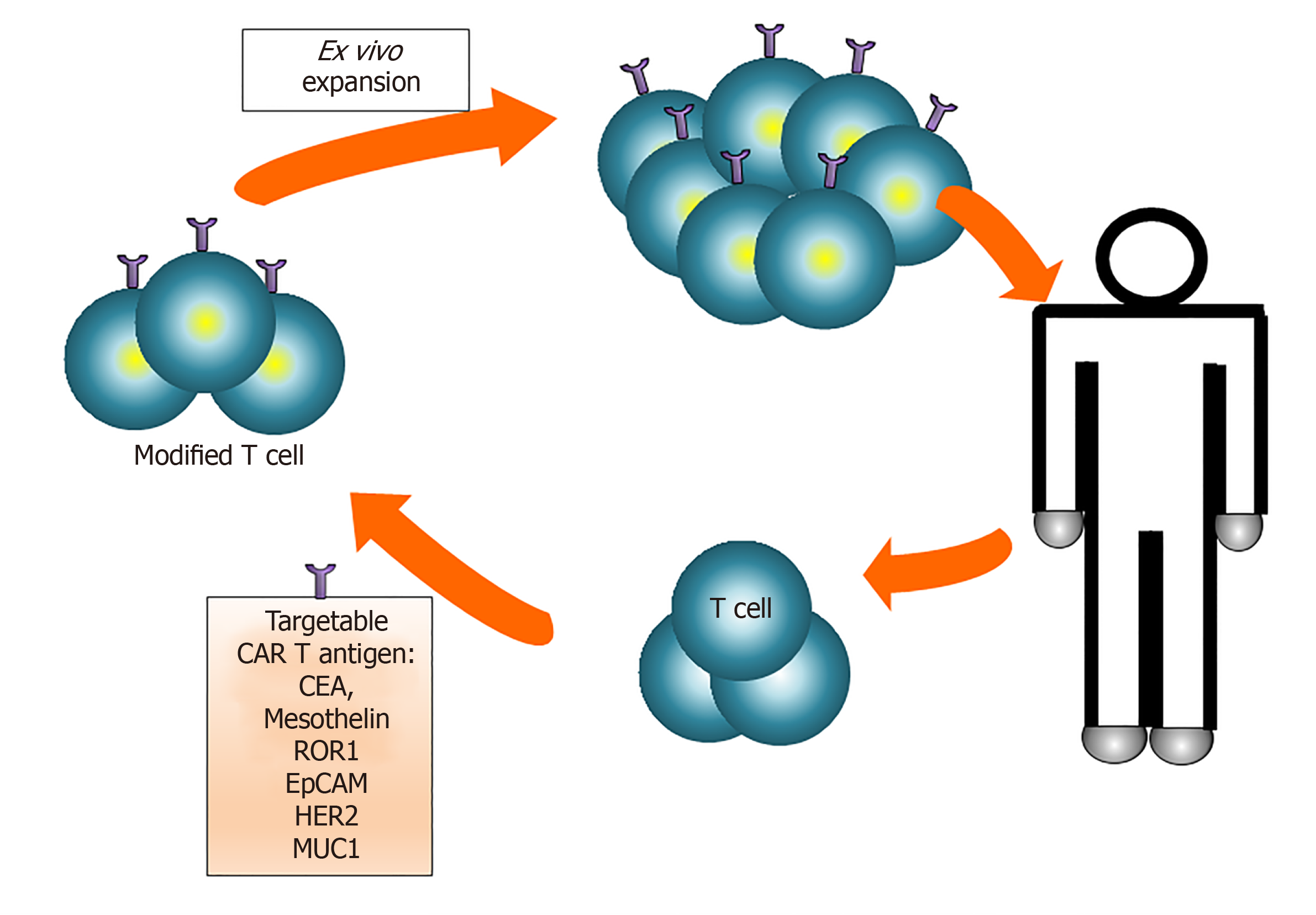Copyright
©The Author(s) 2021.
World J Clin Cases. May 6, 2021; 9(13): 2969-2982
Published online May 6, 2021. doi: 10.12998/wjcc.v9.i13.2969
Published online May 6, 2021. doi: 10.12998/wjcc.v9.i13.2969
Figure 1 T cell checkpoints and their inhibitors to induce anti-cancer immunity.
A: cytotoxic T lymphocyte-associated protein 4 (CTLA-4) in priming and activation of T cell in a lymph node. A T cell normally recognizes a specific tumor antigen, which is presented by an antigen presenting cell in the context of a major histocompatibility complex molecule in addition to the costimulatory signal B7. CTLA-4 is a negative regulator of costimulation that mediates inhibitory signaling into the T cell via competitive inhibition of CD28. CTLA-4 pathway to suppress initiation of an immune response can be blocked with anti-CTLA-4 antibodies (e.g. ipilimumab); B: Programmed cell death 1 (PD-1) in recognition and killing of cancer cell by cytotoxic T cell within a tumor. PD-1 is expressed on activated T cell after the triggering of the T cell receptor. Engagement of PD-1 with programmed cell death ligand 1 (PD-L1) mediates inhibitory signaling into the cytotoxic T cell. PD-1 pathway to suppress antitumor T cell responses can be blocked by anti-PD-1 (e.g. pembrolizumab) or anti-PD-L1 antibodies (e.g. atezolizumab). CTLA-4: Cytotoxic T lymphocyte-associated protein 4; APC: Antigen presenting cell; I: Inhibitory signaling; PD-1: Programmed cell death 1; PD-L1: Programmed cell death ligand 1; TCR: T cell receptor; MHC: Major histocompatibility complex; MDSC: Myeloid-derived suppressor cell; M2: M2-polarized macrophage.
Figure 2 Illustrations of chimeric antigen receptor T cells immunotherapy.
CEA: Carcinoembryonic antigen; ROR1: Receptor tyrosine kinase-like orphan receptor 1; EpCAM: Epithelial cell adhesion molecule; HER2: Human epidermal growth factor receptor 2; MUC1: Mucin 1; CAR: Chimeric antigen receptor.
- Citation: Yoon JH, Jung YJ, Moon SH. Immunotherapy for pancreatic cancer. World J Clin Cases 2021; 9(13): 2969-2982
- URL: https://www.wjgnet.com/2307-8960/full/v9/i13/2969.htm
- DOI: https://dx.doi.org/10.12998/wjcc.v9.i13.2969










